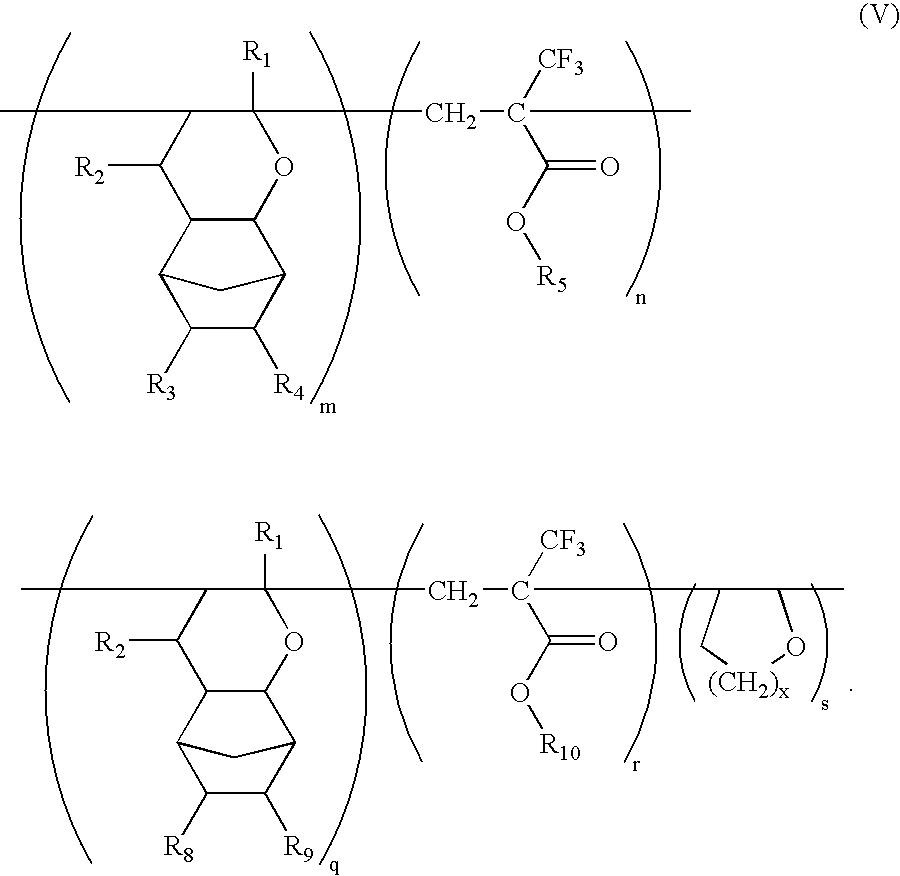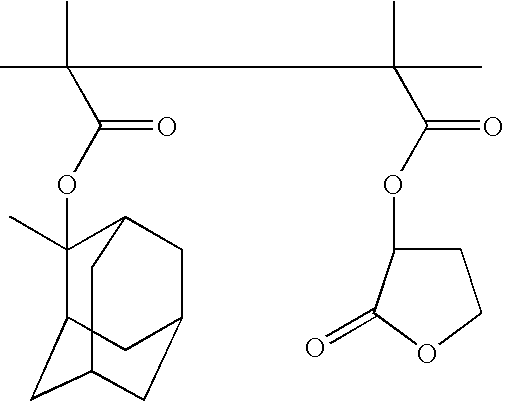Ether monomers and polymers having multi-ring structures, and photosensitive polymers and resist compositions obtained from the same
a technology of ether monomers and polymers, applied in the field of photosensitive polymers, can solve the problems of limited forming fine patterns, many problems in practical use, serious line edge roughness in patterns formed, etc., and achieve the effects of improving transmittance, improving resistance to dry etching, and good adhesion to the underlying layer
- Summary
- Abstract
- Description
- Claims
- Application Information
AI Technical Summary
Benefits of technology
Problems solved by technology
Method used
Image
Examples
polymer synthesis examples
Copolymer Synthesis Example 2-1
[0048]
[0049]T-butyl 3-oxa-tricyclo[6.2.1.02,7]undec-4-ene-10-carboxylate (25 g), prepared according to Monomer Synthesis Example 1-1, and 2-trifluoromethylacrylate (15.0 g) were dissolved in tetrahydrofuran (THF) (100 g) and placed in a reactor, in this instance a 3-neck round-bottom flask, after which the reactor was purged with N2 gas. After adding 2,2′-azobisisobutyronitrile (AIBN) (2 mol %) to the reactor, the polymerization proceeded for a polymerization time of about 12 hours at a polymerization temperature of about 70° C. under N2 purging to obtain a product solution. After terminating the polymerization, the reaction product was precipitated from the product solution slowly in excessive hexane and filtered to separate the precipitates. This first retentate was then dissolved in THF, re-precipitated in hexane and again filtered to separate the precipitates. The second retentate was then dried in a vacuum oven maintained at 50° C. for about 24 ho...
PUM
| Property | Measurement | Unit |
|---|---|---|
| temperature | aaaaa | aaaaa |
| time | aaaaa | aaaaa |
| polydispersity | aaaaa | aaaaa |
Abstract
Description
Claims
Application Information
 Login to View More
Login to View More - R&D
- Intellectual Property
- Life Sciences
- Materials
- Tech Scout
- Unparalleled Data Quality
- Higher Quality Content
- 60% Fewer Hallucinations
Browse by: Latest US Patents, China's latest patents, Technical Efficacy Thesaurus, Application Domain, Technology Topic, Popular Technical Reports.
© 2025 PatSnap. All rights reserved.Legal|Privacy policy|Modern Slavery Act Transparency Statement|Sitemap|About US| Contact US: help@patsnap.com



